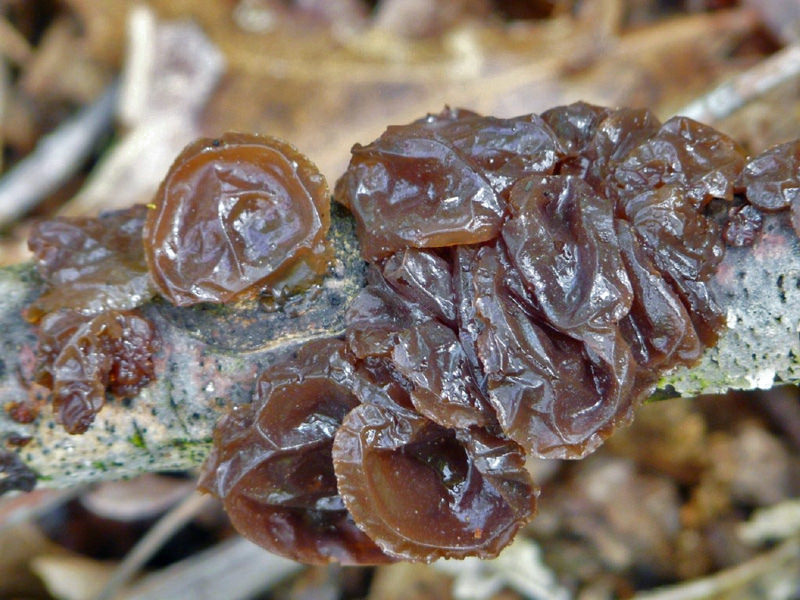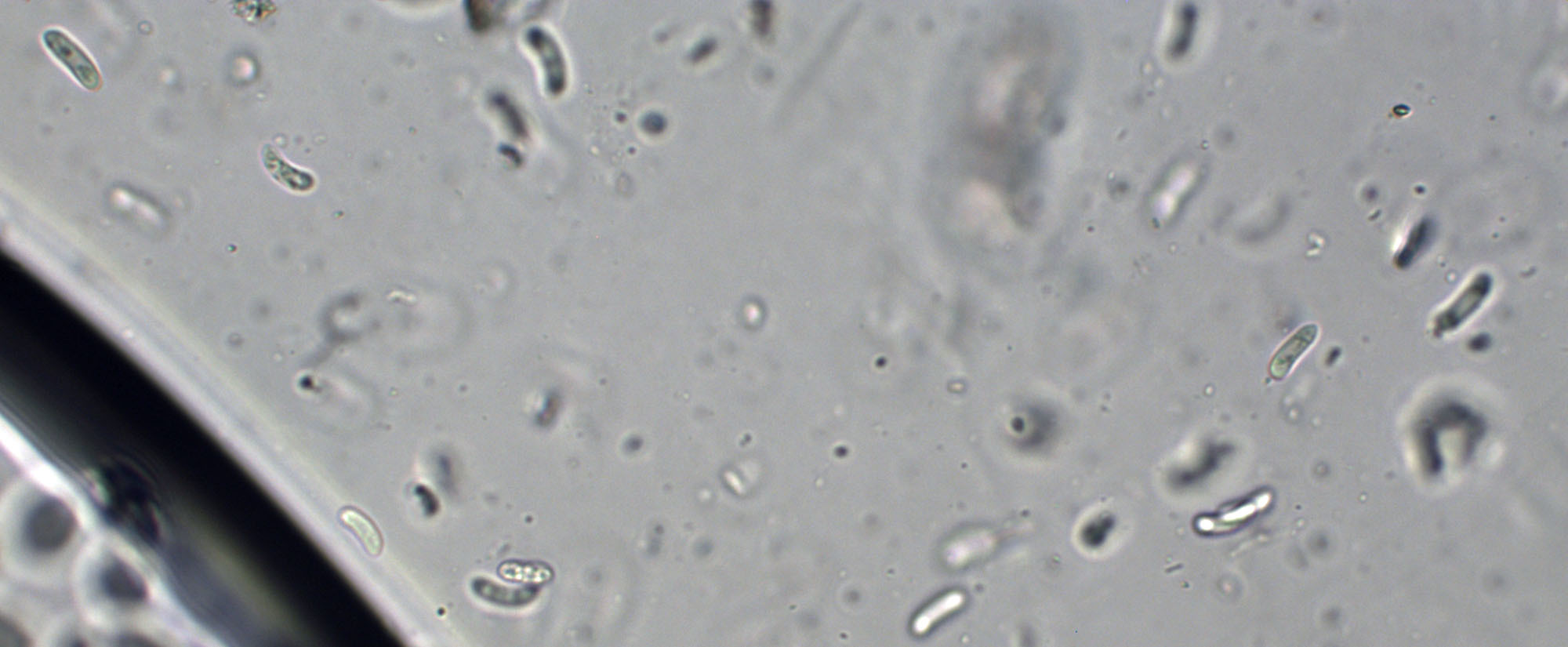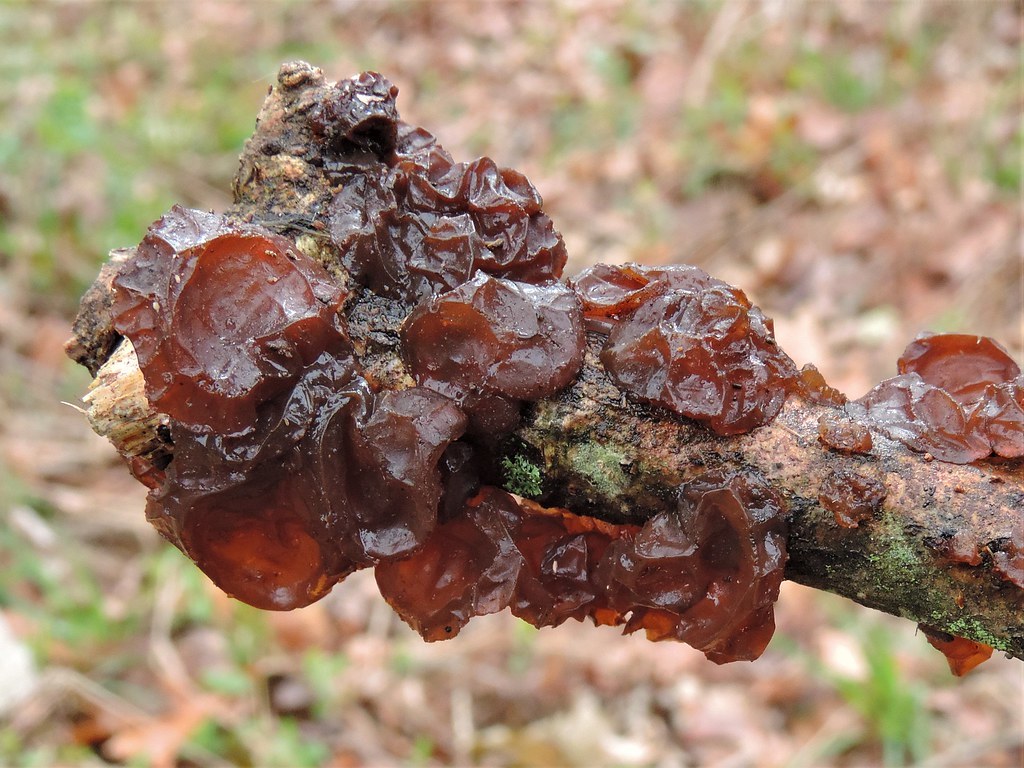Map Snapshot

























288 Records
Description
Brownish-purple jelly-like fruiting bodies fused in overlapping clusters or brain-like masses. The individual fruiting bodies develop telltale depressions; use a hand lens to note the dark, wart-like projections on the surface (J. Solem, pers. comm.).
Where To Find
Globs/clusters on decaying hardwood branches. Prefer cool, humid conditions so likely to be seen spring and fall or during warm spells in winter (J. Solem, pers. comm.).
Seasonality Snapshot
Source: Wikipedia
| Exidia crenata | |
|---|---|

| |
| Scientific classification | |
| Domain: | Eukaryota |
| Kingdom: | Fungi |
| Division: | Basidiomycota |
| Class: | Agaricomycetes |
| Order: | Auriculariales |
| Family: | Auriculariaceae |
| Genus: | Exidia |
| Species: | E. crenata
|
| Binomial name | |
| Exidia crenata | |
| Synonyms | |
|
Tremella crenata Schwein. (1822) | |
Exidia crenata is a species of fungus in the family Auriculariaceae. It has the English name of amber jelly roll. Basidiocarps (fruit bodies) are gelatinous, brown to orange-brown, and turbinate (top-shaped). It typically grows on dead attached twigs and branches of broadleaved trees and is found in North America.
Taxonomy
[edit]The species was originally described from North Carolina in 1822 by German-American mycologist Lewis David de Schweinitz as Tremella crenata. It was transferred to the genus Exidia by Fries in the same year. Exidia crenata was widely considered a synonym of the European Exidia recisa[1] until molecular research, based on cladistic analysis of DNA sequences, showed that the American species is distinct.[2]
Description
[edit]The gelatinous fruit bodies are amber, 8–25 millimetres (3⁄8–1 inch) wide, and 4–12 mm (3⁄16–1⁄2 in) thick. They can be translucent and tend to be moist and/or glossy. The spore print is white.[3]
Similar species
[edit]Similar species include E. recisa and members of Auricularia and Phaeotremella.[3]
Habitat and distribution
[edit]Exidia crenata is a wood-rotting species, typically found on dead attached twigs and branches of broadleaf trees, particularly oak.[1] It is widely distributed in eastern North America, where it can be found from September through May, thriving in winter.[3]
References
[edit]- ^ a b Coker WC (1920). "Notes on the lower basidiomycetes of North Carolina". Journal of the Elisha Mitchell Scientific Society. 35: 113–182.
- ^ Wu F, Zhao Q, Yang ZL, Ye SY, Rivoire B, Dai YC (2020). "Exidia yadongensis, a new edible species from East Asia". Mycosystema. 39: 1203–1214. doi:10.13346/j.mycosystema.200205.
- ^ a b c Audubon (2023). Mushrooms of North America. Knopf. p. 110. ISBN 978-0-593-31998-7.






